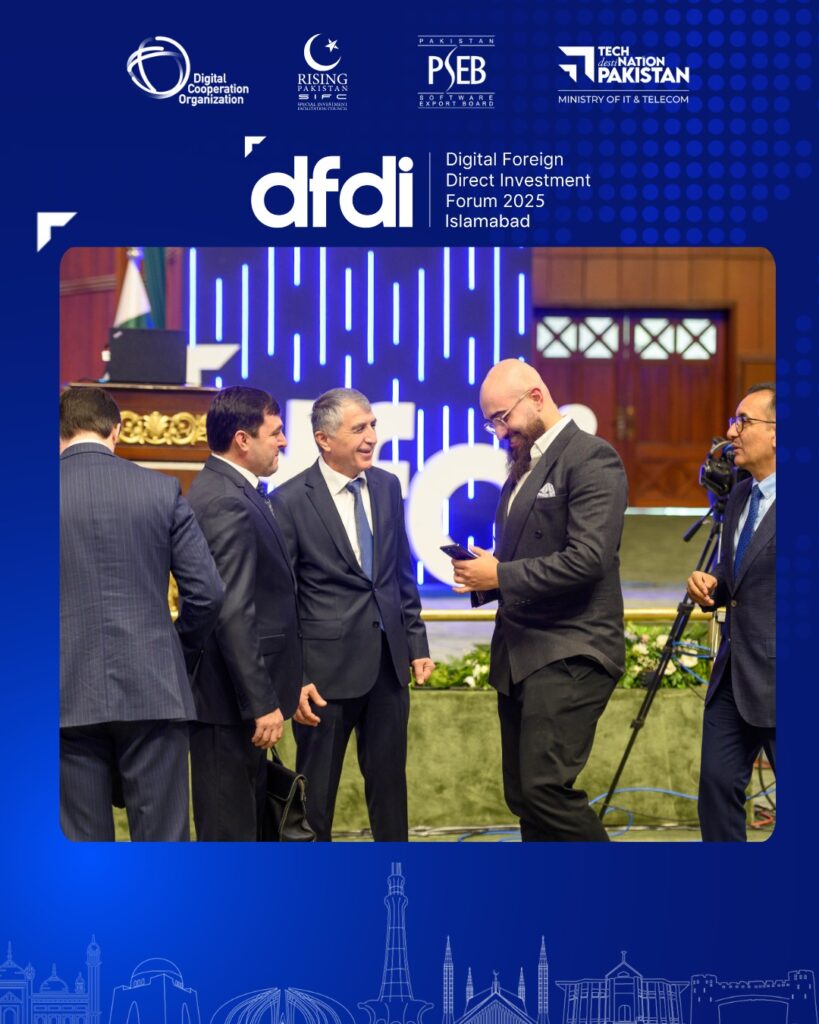Table of Contents
🏢 Benefits of Foreign Direct Investment – A Powerful Engine for Economic Growth
Benefits of foreign direct investmen go far beyond capital inflow. FDI strengthens the economy, boosts employment, and fosters innovation. As the country opens its arms to international investors, 2025 is shaping up to be a milestone year for investment-led development. This article explores why Pakistan is increasingly becoming a favorite destination for foreign investors and what benefits FDI brings to its economic landscape.

📈 1. Benefits of Foreign Direct Investment : Boosting Economic Growth
1. Capital Inflow and Economic Expansion
FDI injects much-needed capital into Pakistan’s economy, facilitating large-scale infrastructure projects, industrial development, and expansion of service sectors. This influx of foreign funds helps bridge the gap in domestic savings and investment, driving overall economic growth.
2. Job Creation and Skill Development
Foreign investments lead to the establishment of new businesses and industries, creating numerous employment opportunities for Pakistan’s growing workforce. Moreover, FDI often comes with training programs and knowledge transfer, enhancing the skills of local employees and improving workforce productivity.
3. Technology Transfer and Innovation
Multinational corporations bring advanced technologies and innovative business practices into Pakistan through FDI. This technology transfer fosters modernization of local industries, improving efficiency and competitiveness both domestically and internationally.
4. Export Promotion and Foreign Exchange Earnings
FDI encourages export-oriented industries by integrating Pakistan into global value chains. Increased exports generate valuable foreign exchange earnings, strengthening the country’s balance of payments and stabilizing the currency.
5. Improvement in Infrastructure
Many foreign investors invest in critical infrastructure such as energy, transportation, and telecommunications. These improvements not only benefit the investors but also enhance Pakistan’s overall business environment and economic connectivity.
6. Boosting Entrepreneurship and Market Competition
FDI introduces international best practices and competitive pressures that encourage domestic firms to innovate and improve efficiency. This competitive environment stimulates entrepreneurship, leading to the growth of small and medium enterprises (SMEs).
7. Enhancing Global Integration
FDI links Pakistan’s economy with global markets, promoting integration and increasing access to international trade networks. This integration helps attract more investments, diversify the economy, and reduce dependency on traditional sectors.
8. Improved Government Revenues
Foreign companies contribute to government revenues through taxes, fees, and duties. Increased government income can be utilized for public welfare programs and development projects, supporting sustainable economic growth.
Conclusion
Foreign Direct Investment is a key driver for Pakistan’s economic growth, offering multiple benefits from capital inflow to technology transfer and job creation. By continuing to improve the investment climate and regulatory framework, Pakistan can attract more FDI, further boosting its economic prospects and global competitiveness.
One of the most significant benefits of foreign direct investment is its positive impact on economic growth. Foreign capital brings in more than money—it brings expertise, advanced technology, and global best practices. With improved GDP performance, Pakistan can achieve sustained growth and reduce its fiscal deficit.
Key Impact:
- Increase in GDP
- Stabilization of currency
- Strengthening of economic indicators
🧑🏭 2. Job Creation and Employment Opportunities
Another major benefit of foreign direct investment is job creation. FDI projects in manufacturing, IT, and services result in thousands of direct and indirect employment opportunities for the local workforce.
Sectors hiring through FDI:
- Textile
- Technology & IT
- Renewable energy
- Construction
🌍 3. Benefits of Foreign Direct Investment: Strengthening International Trade Relations
FDI helps Pakistan deepen its ties with global markets. By attracting companies from China, UAE, Saudi Arabia, Turkey, and the EU, Pakistan positions itself as a regional trade hub.
Benefits:
- Bilateral trade agreements
- Improved export quality
- Entry into global supply chains
🏗️ 4. Infrastructure Development and Modernization
One of the often overlooked benefits of foreign direct investment is the rapid modernization of infrastructure. From transport to telecommunications, FDI-led projects upgrade national assets.
Major Projects:
- CPEC Road & Rail Networks
- New ports and logistics hubs
- Telecom expansion in rural areas
📊 5. Transfer of Technology and Innovation
Foreign investment facilitates technology transfer. Global corporations introduce advanced systems, tools, and innovation strategies that Pakistan-based firms can learn from and adapt.
Examples:
- Automation in textile factories
- AI tools in digital services
- Blockchain in fintech
🎓 6. Skills Development and Knowledge Sharing
The benefits of foreign direct investment also include professional development for the local workforce. Employees gain access to international training programs, mentorship, and exposure to international standards.
Top Skills Developed:
- Digital literacy
- Project management
- International marketing
- Data analysis
🏭 7. Revitalizing Key Industries Through FDI
Several traditional sectors in Pakistan have received a fresh boost due to FDI. For example, the textile industry is now focusing on value-added goods, and the energy sector is becoming more sustainable.
Revived Industries:
- Energy (Solar, Wind, Hydro)
- Agri-business
- Pharmaceuticals
- Tourism
🏦 8. Enhancing Pakistan’s Global Investment Image
The benefits of foreign direct investment include improved investor perception. Reforms in tax incentives, legal protections, and simplified regulations have made Pakistan a more attractive and safer destination for international businesses.
Positive Signals:
- Improved ease of doing business
- Better credit ratings
- Higher rankings in global indices
📉 9. Reduced Dependency on External Borrowing
By increasing FDI inflows, Pakistan can reduce reliance on international loans and aid. Sustainable economic development becomes possible through internally generated resources, tax revenue, and investment returns.
Long-Term Benefits:
- Reduced foreign debt
- Fiscal independence
- Stronger financial institutions
🛡️ 10. Political and Economic Stability
Consistent FDI inflow is a strong indicator of a stable economic and political environment. Investors bring not only funds but confidence in the country’s governance and regulatory system.
Stability Markers:
- Consistent policies
- Legal dispute resolution mechanisms
- Public-private partnerships
📊 FDI Trends in Pakistan – The Numbers Speak
- $2.7 billion in FDI inflow in 2024 (up 14% YoY)
- Top investors: China, UAE, Saudi Arabia, Turkey
- Top sectors: Energy, IT, Construction, Telecom
- New SEZs attracting global attention
🔍 Why 2025 Is the Ideal Year to Invest
As global economies rebound from recent disruptions and technology reshapes industries at a record pace, 2025 stands out as the ideal year to invest. Whether you’re a foreign investor, venture capitalist, or entrepreneur, this year presents unmatched opportunities across sectors and geographies. Here’s why smart investors are making their move in 2025.
1. Economic Recovery and Market Stabilization
Post-pandemic economic recovery efforts have started to yield results. Global markets are showing signs of sustained stability and growth, making 2025 a sweet spot for entering at the early stages of long-term upward trends. With inflation rates moderating and interest rates stabilizing in key economies, investment risks are gradually diminishing.
2. Digital Transformation Accelerating Globally
From fintech to AI and clean energy, 2025 is witnessing the peak of digital transformation. Governments and businesses are doubling down on smart technologies, offering robust returns for investors in sectors like:
- Digital infrastructure
- Cloud computing
- Artificial intelligence
- Renewable energy
- E-commerce & logistics
Early investments in these areas now can lead to exponential growth in the coming years.
3. Favorable Investment Policies in Emerging Markets
Countries like Pakistan, India, Vietnam, and several African nations have introduced investor-friendly reforms to attract Foreign Direct Investment (FDI). These include:
- Reduced corporate taxes
- Streamlined registration processes
- Sector-specific incentives
- SEZs (Special Economic Zones) with tax holidays
2025 is the year these policies are being aggressively implemented, making now the optimal entry point.
4. Geopolitical Realignments Create New Opportunities
As supply chains diversify and strategic alliances shift, new investment hotspots are emerging. Countries involved in regional integration projects—such as the China-Pakistan Economic Corridor (CPEC) or the African Continental Free Trade Area (AfCFTA)—are becoming more attractive due to improved infrastructure and market access.
5. Sustainability and ESG-Driven Investments Rising
Environmental, Social, and Governance (ESG) investments are no longer niche—they’re mainstream in 2025. Governments and consumers are demanding transparency, ethics, and sustainability. Investors who act now in green tech, sustainable agriculture, and ESG-compliant businesses are likely to see both financial and reputational returns.
6. Access to Capital and Innovation Is at Its Peak
Thanks to fintech platforms, crowdfunding, and digital banking ecosystems, access to capital is easier than ever. Simultaneously, innovation hubs and incubators are thriving—meaning that promising startups are abundant and often underpriced, especially in emerging markets.
7. Global Talent Pool and Remote Work
With remote work fully normalized, investors can build global teams, reduce costs, and scale faster. The talent pool has never been more accessible or diversified. In 2025, investing in digital-first businesses means lower overheads and higher scalability.
Conclusion: Don’t Wait — 2025 Is the Moment
From stabilized economies and digital breakthroughs to favorable regulations and a booming ESG sector, 2025 offers a rare convergence of favorable investment conditions. For those seeking strategic, long-term growth, this is the year to act decisively.
With favorable government policies, international partnerships (such as CPEC), and a young digital-savvy population, 2025 offers ripe conditions for investment. The benefits of foreign direct investment are now aligned with long-term national priorities.

🙋♂️ FAQs About the Benefits of Foreign Direct Investment
Q1. What are the main Benefits of foreign direct investment?
A: Energy, Information Technology, Infrastructure, Agriculture, and Manufacturing.
Q2. Is foreign Benefits of foreign direct investment?
A: Yes. The government offers legal protections, tax incentives, and improved ease of doing business.
Q3. How does FDI help local businesses?
A: Through partnerships, technology transfer, and access to international markets.
Q4. Can individuals invest directly startups?
A: Yes, particularly in IT and fintech sectors. Platforms and agencies assist with compliance and entry.
Q5. Are there any tax Benefits of foreign direct investments?
A: Yes. Pakistan offers tax holidays, customs duty exemptions, and SEZ-specific incentives.
📝 Conclusion: Unlocking the Benefits of Foreign Direct Investment
The benefits of foreign direct investment are clear: economic growth, job creation, enhanced infrastructure, and a globally integrated business environment. Whether you’re a multinational or a startup investor, Pakistan’s FDI landscape in 2025 offers unmatched potential. Take advantage of this momentum and be part of the transformation.
Follow us on Facebook for Quick Response & Quires – Digital Foreign Direct Investment (DFDI)
